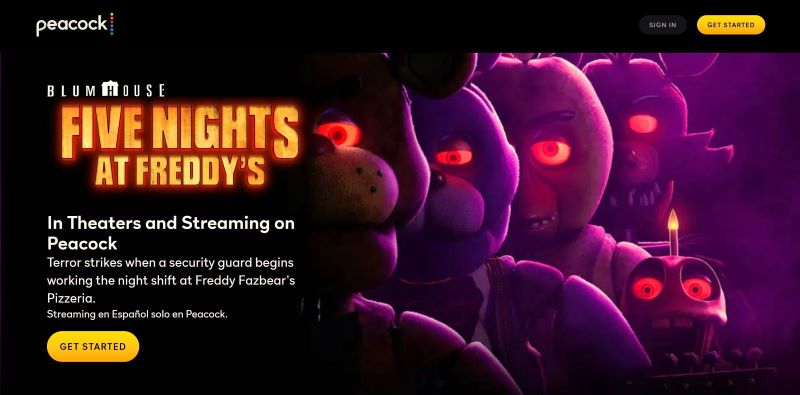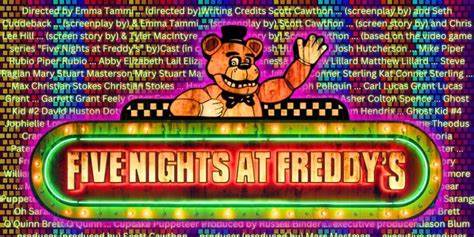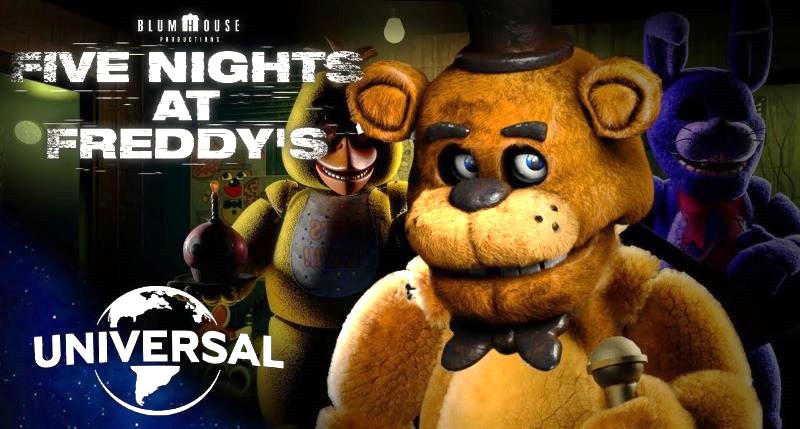Horror film “Five Nights at Freddy’s” achieved amazing premiere boxoffice despite its simultaneous run on the Peacock video streaming service.
Just a $20 million movie production, “Freddy’’s” posted a humongous $80 million domestically (U.S. and Canada) for Universal Pictures for the Oct. 27-29 weekend while streaming concurrently on Peacock. Both Universal and Peacock are owned by cable TV giant Comcast. A simultaneous cinema/streaming release is called day-and-date in the industry (actually, the Peacock premiere was a day earlier).
Having a big movie run simultaneously in streaming is rare. “Other than ‘Five Night at Freddy’s,’ studios seem to be returning back to exclusive theatrical windows because it’s proven to be more profitable than hybrid releases,” says a Variety story by Rebecca Rubin. That means a pure cinema release for big films followed by video streaming weeks or months later yields more money over the long run (“Top Gun: Maverick” was so popular in cinemas that its video-on-demand release came 91 days later!). Hybrid pairs cinema and streaming together or nearly simultaneously.
The reason? The cinema release does not overexpose, because buying a ticket permits only one person to view. Meanwhile, multiple people can watch any streaming play and the same film can be repeated in streaming. But a drawback is the potential for piracy, meaning unauthorized streams during the exclusive cinema window. Cinema tickets at $10 (giving $5+ to the distributor) provide a bigger chunk of per-capita money than a movie gets from a subscription video-on-demand licensing deal.

It should be pointed out that Peacock is a second-tier streamer with just 28 million subscribers worldwide, compared with Netflix, which has 247 million subs globally and Disney+ with 146 million subs. The smaller Peacock base means less cannibalization from the parallel cinema run. Peacock touts in its marketing that it offers theatrical “Freddy’s” (see screen grab above), so the horror flick is being flogged to attract new subscribers.
Universal Pictures profited from window tinkering previously with “Trolls: World Tour” in April 2020. When the pandemic clampdown was beginning, Universal repurposed animated kids’ “Trolls” as a direct-to-premium video — a high-priced transactional video stream — grossing more than $100 million in video (no cinema runs). At that time, subscription streaming only had Netflix as a sizeable platform.
There’s a tendency for industry to look for a single template for releasing theatrical films, since the one-way strategy existed for decades previously. But the evolving digital media landscape will clearly require multiple distribution templates, depending on state of the industry (right now, cinemas are starved for new movies amid Hollywood labor strikes so willing to bend) and the quality/appeal of each movie.
“The consensus is big budget movies will continue to gravitate to a full cinema premiere, given that route provides the best economic returns; film distributors pocket about half of ticket prices,” observes MarketingMovies.net in a 2021 post. Movies with less potential as cinema-exclusive releases will instead mix-and-match cinema with video streaming hybrid.
The mix-and-match is evident across media as evidenced by cable TV series blockbuster TV series “Yellowstone,” which premiered on Paramount Network five years ago and generated lucrative spinoffs. “Yellowstone”-related runs on over-the-air broadcaster CBS and streamer Peacock were successful, demonstrating cross-platform synergy and are attributed for boosting Peacock subscriptions. In the sports world, the Utah Jazz pro basketball team just split telecasts of its local games on a streamer and local TV, whose wider circulation is expected to be a promotional boost to keep more sports fans engaged with the Jazz. The hybrid template is a risk because all revenues aren’t guaranteed, so the sports industry will watch.
Again, no one-size-fits-all distribution template has emerged, or is likely to emerge.
The huge boxoffice for “Freddy’s” is quite an achievement because audiences knew about the Peacock availability. A contemporary Google search shows a popular lookup phrase is “watch five night at freddy’s movie online free.”
The ginormous “Freddy’s” opening surprised Hollywood marketers. Audience tracking research forecast a $50 million premiere, and the $80 million actual represents a wide 60% misjudgment. The acceptable error rate is 15% over or under for tracking research. The misjudgment on “Freddy’s” is particularly glaring because the horror audience is a heavy cinema-going demographic.
In general, horror-genre films like “Freddy’s” open well and then fade fast. “The horror audience — which is an active filmgoing demographic — come early, and horror films seldom snag any secondary audiences in later weeks because these films usually serve up blood on screen and carry restrictive audience classifications,” says the third edition of academic/business book “Marketing to Moviegoers.” The horror audience jumps fast because it is plugged into popular culture, while other audience segments are slower to be aware.
“Five Nights at Freddy” is a movie adaptation of a horror-survival video game released in 2014 about after-hour intrigue that ensues in a restaurant Freddy Fazbear’s Pizza. The restaurant is filled with animatronic robots for entertainment (like mechanical teddy bears) that are catalysts for horror and is reminiscent of the real-life Chuck E. Cheese pizza chain.
The movie is from Blumhouse Productions, which is an independent hit-maker from Jason Blum that specializes in horror and reaching the youth demographic. “Freddy’s”” is a welcome success for Blumhouse, whose pricey reboot of “The Exorcist” movie franchise fell flat earlier this year, also at Universal (where Blumhouse is under contract). Universal Pictures is the major movie studio most associated with the horror genre.

Do the ‘Freddy’s’ ?
There are other winkles to this modest horror film “Five Nights at Freddy’s” that scaled the heights of cinema boxoffice:
- Movie adaptations seem to be soaring. “Five Nights at Freddy’s” is derived from a video game. Elsewhere, Warner Bros. Pictures adaptation of a toy doll created global blockbuster “Barbie” generating $636 million in domestic boxoffice after its mid-July premiere, or $1.44 billion globally when adding international to domestic.
- Despite naysayers, the cinema-release window continues to show strength through blockbusters post-pandemic (“Top Gun: Maverick,” “Avatar: The Way of Water,” etc.) However, Hollywood labor strikes threaten the flow of new movies to cinemas for the next two years.
- While most horror films serve up blood and guts, “Freddy’s” intentionally was made for its PG-13 audience classification, not a more severe R-rating that would restrict teenagers ages 17 and under. That helped lift “Freddy’s” cinema audience. There is no plan for a separate R-rated version, which is often the case for PG-13 hits.
- “Freddy’s” got poor reviews with a lowly 25% on Rotten Tomatoes. Horror audiences aren’t influenced by highbrow film critics, but many of the slams can from horror fans. However, the broad PG-13 classification and dearth of cinema competition helped boxoffice.
Related content:

Leave a Reply